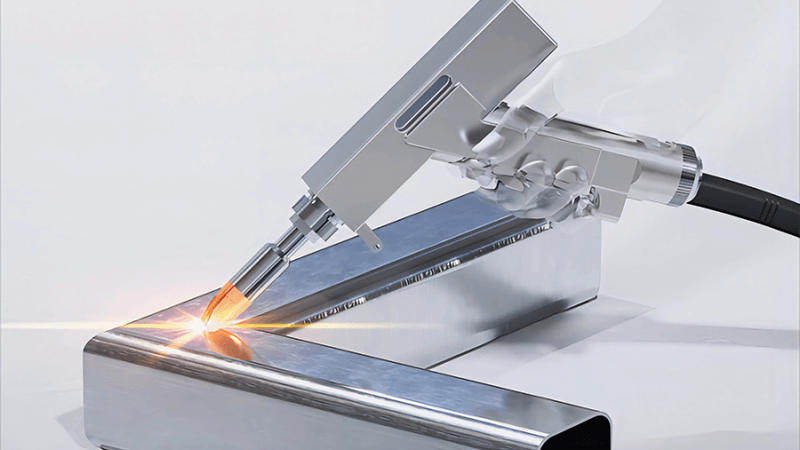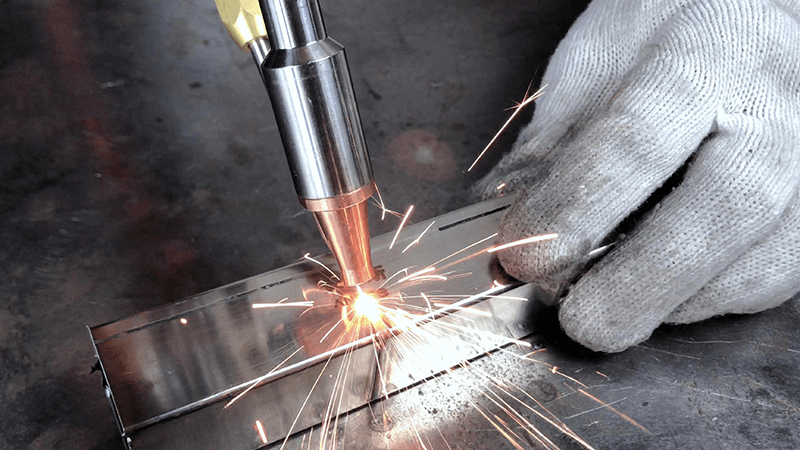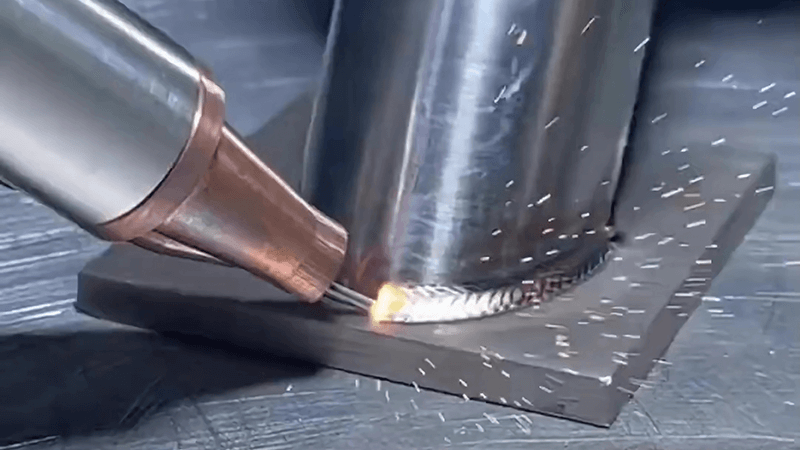Laser welding machines are no longer niche tools. Many industries now depend on them because traditional welding cannot keep up with demands for speed, accuracy, and durability. Ignoring this shift often means falling behind in quality and efficiency.
Laser welding machines are used in industries such as automotive, aerospace, medical devices, jewelry, and electronics, because they provide precision, low heat input, and automation that traditional welding cannot achieve.
I have seen these machines change how companies operate. From mass production to delicate components, their role is expanding. Let me explain where and why they are so valuable.

What industries use laser welding?
Many people still think welding belongs only to heavy industry. That assumption is outdated. Today, a wide range of industries integrate laser welding into daily production.
Industries that use laser welding include automotive, aerospace, jewelry, electronics, medical devices, and energy. Each sector benefits from the high accuracy, reduced thermal distortion, and automation that laser welding provides.
The Spread Across Sectors
I have seen laser welding1 machines shine in sectors from automotive and aerospace to jewelry and electronics—anywhere precision, low heat input, and automation matter most. For example, car makers use laser welders for lightweight metal frames. Aerospace companies use them for turbine parts where failure is not an option. Jewelers rely on them to join tiny pieces without leaving visible marks. In electronics, manufacturers weld micro-components without damaging sensitive circuits. Medical tool makers use them to ensure sterile, smooth surfaces.
| Industry | Application Focus | Benefit of Laser Welding |
|---|---|---|
| Automotive | Body panels, battery packs, exhausts | Speed, strength, automation |
| Aerospace | Turbine blades, engine components | Precision, fatigue resistance |
| Jewelry | Chains, settings, repairs | Clean, aesthetic welds |
| Electronics | Microchips, sensors, connectors | Low heat input, minimal damage |
| Medical devices | Surgical tools, implants, instruments | Smooth joints, biocompatibility |
| Energy | Solar panels, batteries | Consistent, reliable bonding |
When I look at this diversity, I see one clear theme: industries that value precision and efficiency2 naturally adopt laser welding. It is no longer limited to one sector but is becoming a standard manufacturing process worldwide.

What can you use a laser welder for?
The purpose of a laser welder goes far beyond joining two metal sheets. Its versatility makes it one of the most flexible tools in modern manufacturing.
A laser welder can be used for precision joining of metals and non-metals, repairing delicate parts, creating strong and clean joints, micro-welding tiny components, and automating mass production lines.
The Range of Applications
I once worked with a manufacturer making medical tools. He came to me frustrated with cracked welds from traditional TIG3. We set him up with a laser welder4—suddenly, joints were cleaner, no rework was needed, and his production time dropped by almost half. That story shows how laser welders handle problems that old methods cannot solve.
| Use Case | Examples | Why Laser Welding Works Best |
|---|---|---|
| Micro-welding | Electronics, jewelry | High accuracy, no damage to nearby areas |
| Deep penetration | Automotive, aerospace | Strong welds for load-bearing parts |
| Repair work | Mold repair, jewelry fixes | Minimal heat input, precise control |
| Automation | High-volume production lines | Consistency, speed, low labor cost |
| Mixed materials | Metal with non-metals | Controlled energy delivery |
I see clients in different industries use laser welders not just for joining but also for repairing and redesigning. The flexibility opens new ways to cut costs and innovate products. That adaptability is what makes the machine stand out.

What are the applications of laser welding machine?
Many buyers think of welding only in terms of joining large metal plates. But laser welding machines serve much more refined roles in modern industries.
Applications of laser welding machines include high-volume automotive production, delicate medical device manufacturing, precision jewelry repair, electronics assembly, aerospace component joining, and even energy sector projects like battery packs and solar panels.
Breaking Down Laser Welding Applications
Laser welding machines are found across every production floor I have visited. In automotive plants5, robots with laser welders run 24/7, assembling car bodies. In hospitals, surgical instrument suppliers depend on welders for contamination-free tools. Jewelers use them for fixing chains or rings with invisible seams. Aerospace engineers rely on laser welding to meet extreme safety standards. Even the renewable energy sector uses them for building batteries and solar panel components.
| Sector | Application Example | Resulting Advantage |
|---|---|---|
| Automotive | EV battery packs | Reliable energy storage, safe welds |
| Medical devices | Hypodermic needles, endoscopic tools | Smooth surfaces, patient safety |
| Jewelry | Ring resizing, chain repair | No visible marks, customer satisfaction |
| Aerospace | Jet engine parts, satellite modules | Stress-resistant welds, reduced defects |
| Electronics | Sensor housings, semiconductor parts | Precise joints, minimal damage |
| Energy | Fuel cells, solar panels | Long-term performance, cost reduction |
Every time I step into a client’s factory, I notice how laser welding6 is often at the center of innovation. It is not about replacing old welding entirely but about enabling designs and products that were impossible before.

What is the main advantage of laser welding?
Every technology competes on its strongest feature. For laser welding, one advantage stands out more than any other.
The main advantage of laser welding is its unmatched precision, which allows strong, clean, and low-heat welds on both micro and large-scale applications, reducing defects, distortion, and production time.
Why Precision Matters Most
Laser welding offers many benefits, but precision is the one clients always return to. When I show a customer how a laser welder can join two tiny components without damaging the surrounding material, their eyes light up. This precision also means less post-processing, fewer rejected parts, and faster delivery to customers. For industries where tolerances are tight, this can make or break success.
| Advantage | Description | Impact on Industry |
|---|---|---|
| Precision7 | Tight focus, minimal distortion | Ideal for medical, electronics, aerospace |
| Low heat input8 | Less thermal damage | Protects sensitive parts |
| Speed | Fast weld cycles | Cuts production time |
| Automation ready | Easy to integrate with robots | Scales up production |
| Clean results | Smooth, aesthetic finish | Key for jewelry, consumer products |
What I like most about this precision is its versatility. It makes laser welding suitable for both mass production and niche industries. From EV batteries to custom jewelry, the ability to weld without compromise creates opportunities that traditional methods cannot offer.

Conclusion
Laser welding machines9 are transforming industries worldwide. From cars and planes to jewelry and electronics, they give manufacturers accuracy, speed, and reliability. I have seen them solve problems that old methods only made worse. Whether it is smoother joints in medical devices or invisible seams in jewelry, the advantages are clear. For companies that want to grow, adopting laser welding is no longer optional—it is essential.
-
Explore the advantages of laser welding to understand its impact on precision and efficiency across various industries. ↩
-
Discover how precision and efficiency are transforming manufacturing processes and leading to innovative solutions. ↩
-
Discover why traditional TIG welding struggles with issues like cracked welds and how laser welding offers superior solutions. ↩
-
Discover how laser welders enhance precision, reduce production time, and solve issues traditional methods can't, boosting efficiency and innovation. ↩
-
Discover insights on how automotive plants leverage technology for better production processes and innovation. ↩
-
Explore this link to understand how laser welding enhances precision and efficiency in various industries. ↩
-
Understanding the significance of precision in laser welding can enhance your knowledge of its advantages and applications. ↩
-
Exploring the benefits of low heat input will reveal how it protects sensitive components during the welding process. ↩
-
Finding the best laser welding machine and laser welding solutions from Kirin Laser, clicking this link to get all your needs for your applications. ↩





